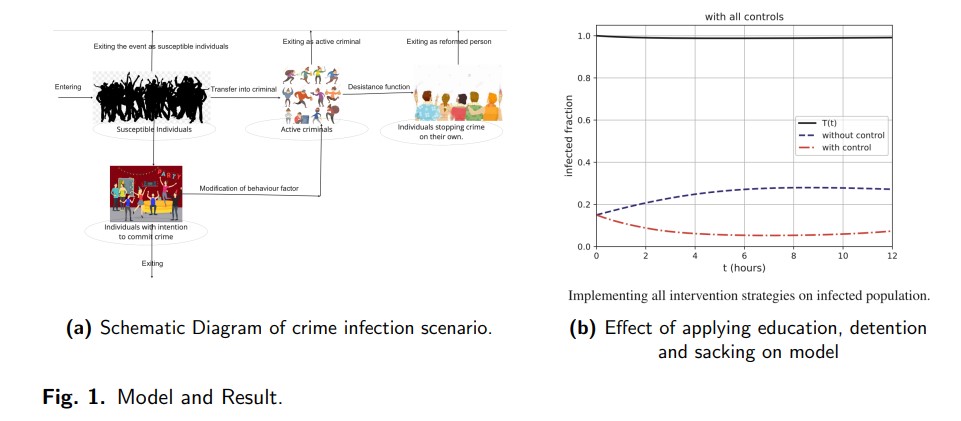AIMS Ghana Alumnus – 2020, Edem Fiatsonu was part of a research team including Prof. Georg Bader and Nicholas Kwasi-Do O. Opoku looking into, “Controlling crime with its associated cost during festive periods using mathematical techniques” The focus was to see ways to reduce criminal activity thus boosting security during mass gatherings. This work was published by Elsevier on 17th February 2021.

Edem states, “We seek to control crime, bringing it to its minimal level during festive periods such as Christmas, Valentine’s Day, including entertainment events such as music awards. The model assumption is that crime can be considered a social epidemic process. Our new mathematical techniques allow more insight into crime and the best policies to control it during festive periods. This will help event organizers to educate participants on how to be responsible and to be aware of their surroundings, for their own security and for the security of others. It will also get rid of anyone possessing or exhibiting criminal behaviour at the event premises.”
Introduction
Entertainment events during holidays, festive occasions (such as Christmas, Valentine’s Day, etc.) are periods that raise problems for the general public since criminals see these periods as a chance to commit criminal offences. Crime is taken as an omission of acts when someone fails to perform a duty by law and crime as a criminal intent where the action is administered with a culpable mind. Major holidays and festive times are more likely to affect and change individual normal daily activities. Festive periods also bring family and friends together in a setting that is associated with expressive crimes. As an example, sexual abuse increases during Valentine’s Day, and theft cases rise around the Christmas Season and entertainment events. Crime does not only affect economic productivity, the well-being of individuals in the society is also affected diversely. Controlling crime considers the very fact that crime may happen at any event or festive period. Hence, it is necessary to reduce crime and ensure it is at its minimal level.
Methods and Results
To understand the dynamics of how crime spread at a birthday party, the total population in the society was divided into four main categories depending on the criminal status of individuals as shown in Fig.1.(a) below.
Everyone is susceptible to crime since there is no immunization for committing a crime making the first group. We have those with the intention to commit a crime, active criminals, and the recovery class. Depending on the total number of infected individuals and the duration of the event, some active criminals stop committing a crime. We then affirmed the social and theoretical properties of the models using numerical simulations. We have three control interventions (education, detention, and sacking) to obtain the best way to put escalating crime during the birthday to its minimal level. To know the best intervention, we carried out some numerical simulations. Our result proves that educating people as a single strategy at a party of possible crime is the most effective strategy. However, implementing two or more control interventions also gave a better result. To put ice on the cake, we performed a cost-benefit analysis on the interventions that show a single intervention is not advisable in eradicating crime. Detaining an individual who committed or has the intention to commit a crime is the most expensive single intervention since you may need additional security personnel to monitor the behavior of this individual. However, sacking an individual with a criminal activity comes at a lesser cost. Implementing all three interventions at once is the most expensive of all the applied intervention strategies. The combination of education and sacking is the best cost-effective strategy in terms of cost.


